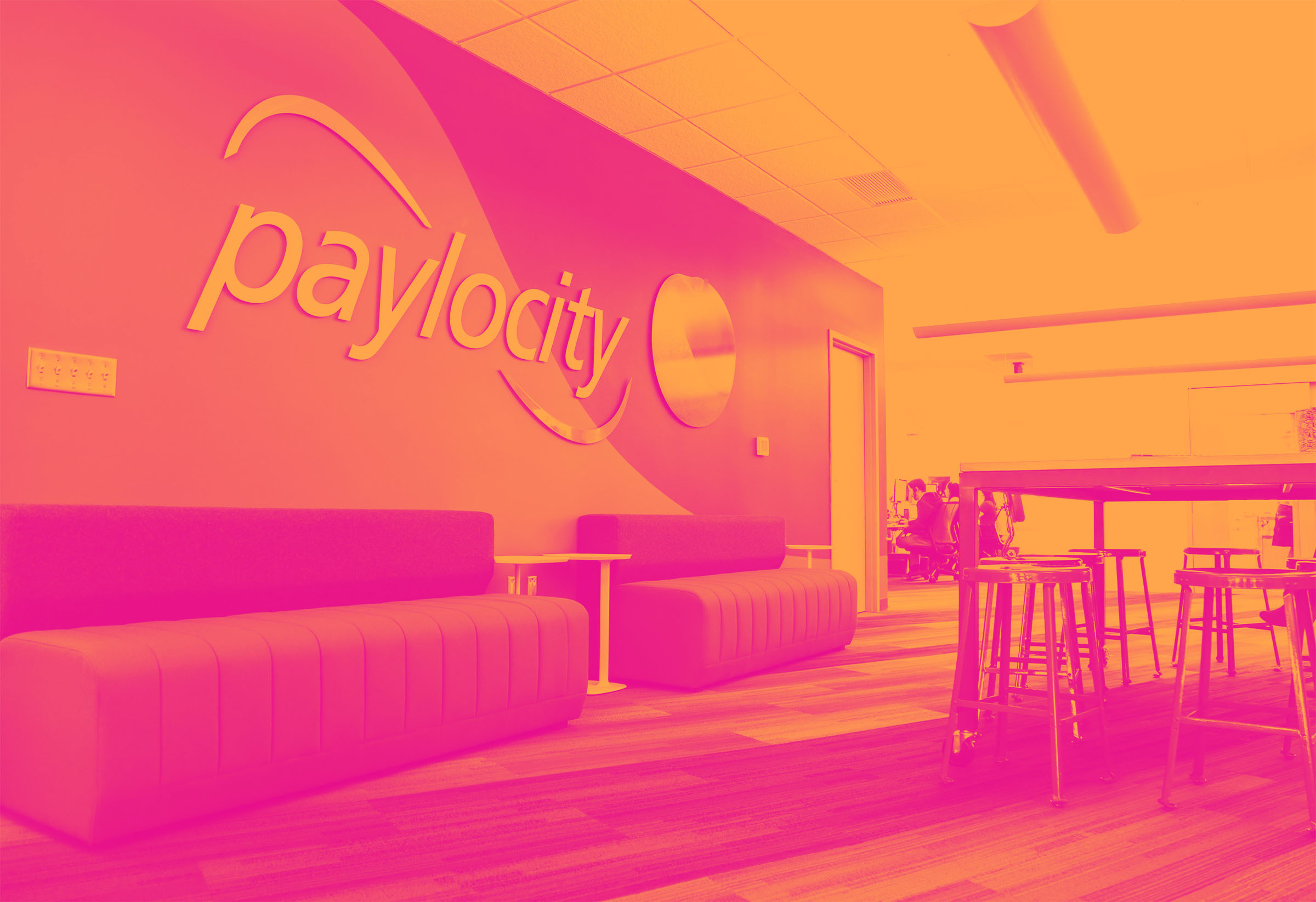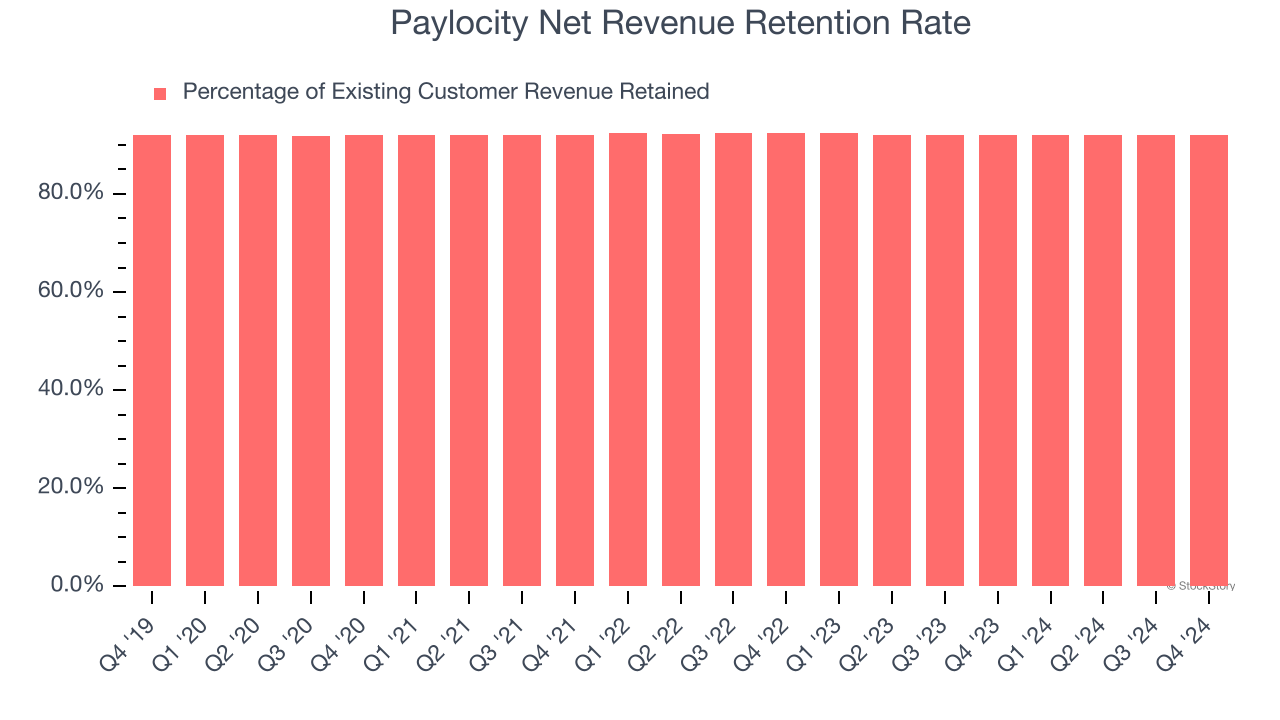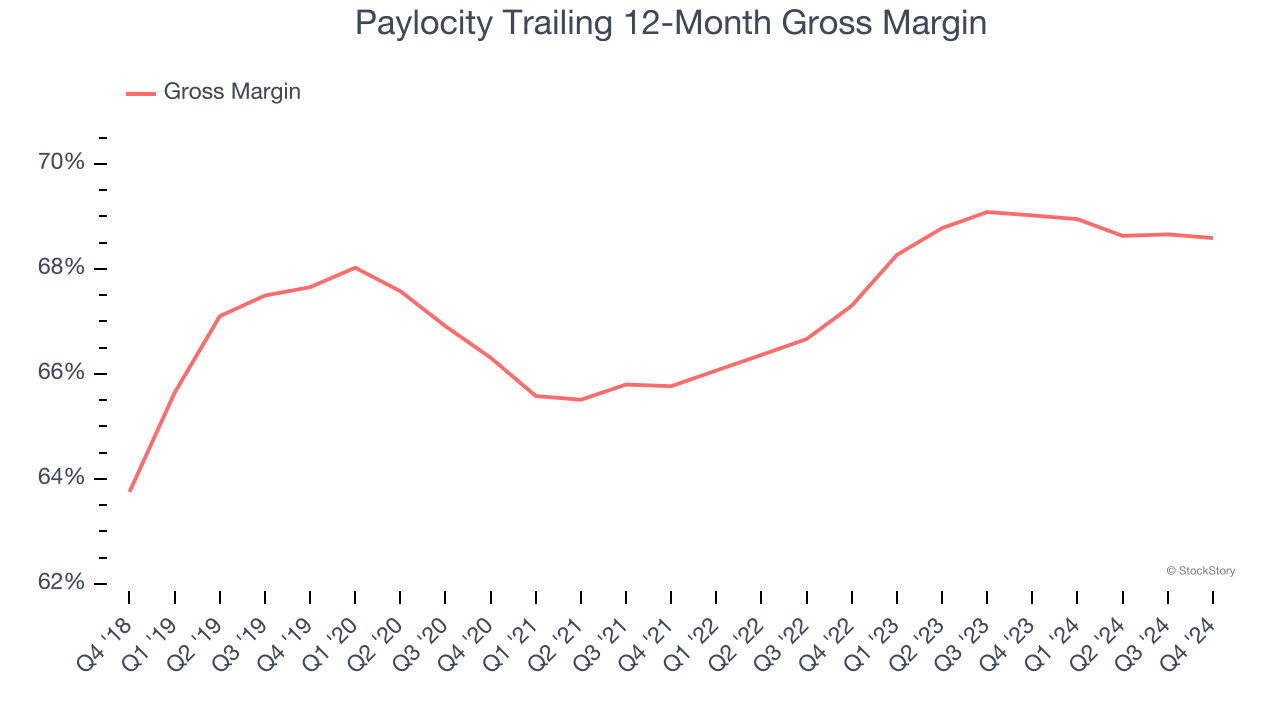
While the broader market has struggled with the S&P 500 down 6.9% since October 2024, Paylocity has surged ahead as its stock price has climbed by 6.8% to $181.76 per share. This was partly due to its solid quarterly results, and the performance may have investors wondering how to approach the situation.
Is there a buying opportunity in Paylocity, or does it present a risk to your portfolio? Get the full stock story straight from our expert analysts, it’s free.
We’re happy investors have made money, but we're cautious about Paylocity. Here are three reasons why you should be careful with PCTY and a stock we'd rather own.
Why Is Paylocity Not Exciting?
Founded by payroll software veteran Steve Sarowitz in 1997, Paylocity (NASDAQ: PCTY) is a provider of payroll and HR software for small and medium-sized enterprises.
1. Customer Churn Hurts Long-Term Outlook
One of the best parts about the software-as-a-service business model (and a reason why they trade at high valuation multiples) is that customers typically spend more on a company’s products and services over time.
Paylocity’s net revenue retention rate, a key performance metric measuring how much money existing customers from a year ago are spending today, was 92% in Q4. This means Paylocity’s revenue would’ve decreased by 8% over the last 12 months if it didn’t win any new customers.

Paylocity has a poor net retention rate, warning us that its customers are churning and that its products might not live up to expectations.
2. Projected Revenue Growth Is Slim
Forecasted revenues by Wall Street analysts signal a company’s potential. Predictions may not always be accurate, but accelerating growth typically boosts valuation multiples and stock prices while slowing growth does the opposite.
Over the next 12 months, sell-side analysts expect Paylocity’s revenue to rise by 8.8%, a deceleration versus its 27% annualized growth for the past three years. This projection is underwhelming and suggests its products and services will face some demand challenges.
3. Low Gross Margin Hinders Flexibility
For software companies like Paylocity, gross profit tells us how much money remains after paying for the base cost of products and services (typically servers, licenses, and certain personnel). These costs are usually low as a percentage of revenue, explaining why software is more lucrative than other sectors.
Paylocity’s gross margin is slightly below the average software company, giving it less room than its competitors to invest in areas such as product and sales. As you can see below, it averaged a 68.6% gross margin over the last year. That means Paylocity paid its providers a lot of money ($31.41 for every $100 in revenue) to run its business. 
Final Judgment
Paylocity isn’t a terrible business, but it doesn’t pass our bar. With its shares topping the market in recent months, the stock trades at 6.4× forward price-to-sales (or $181.76 per share). Beauty is in the eye of the beholder, but we don’t really see a big opportunity at the moment. We're pretty confident there are more exciting stocks to buy at the moment. We’d recommend looking at a dominant Aerospace business that has perfected its M&A strategy.
Stocks We Like More Than Paylocity
The market surged in 2024 and reached record highs after Donald Trump’s presidential victory in November, but questions about new economic policies are adding much uncertainty for 2025.
While the crowd speculates what might happen next, we’re homing in on the companies that can succeed regardless of the political or macroeconomic environment. Put yourself in the driver’s seat and build a durable portfolio by checking out our Top 5 Strong Momentum Stocks for this week. This is a curated list of our High Quality stocks that have generated a market-beating return of 175% over the last five years.
Stocks that made our list in 2019 include now familiar names such as Nvidia (+2,183% between December 2019 and December 2024) as well as under-the-radar businesses like Comfort Systems (+751% five-year return). Find your next big winner with StockStory today for free.





